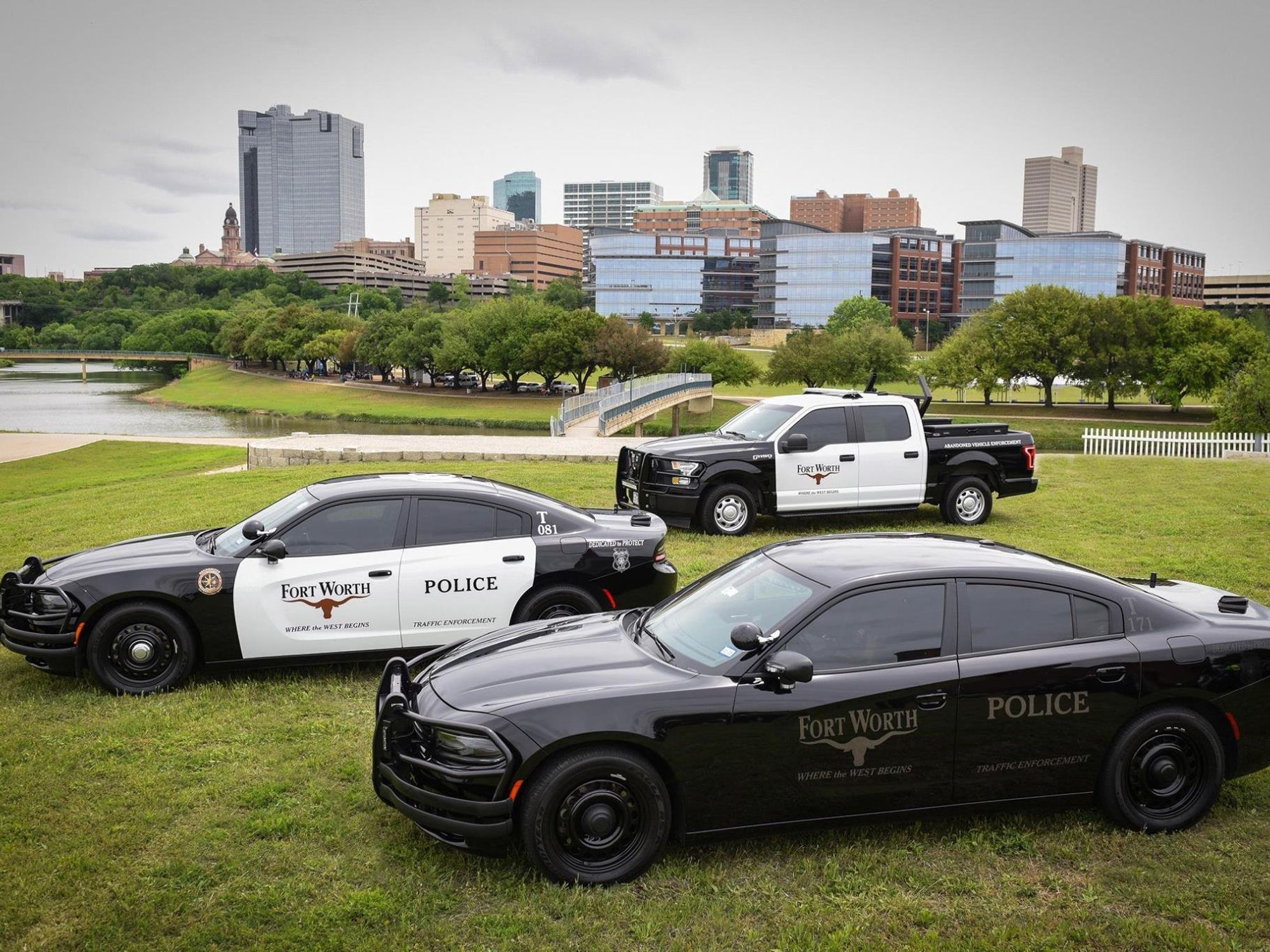Police News
Fort Worth police department clarifies pursuit policy after recent chases

Fort Worth police vehicles in non-chase mode.
Police chases have become a controversial matter, moreso around Dallas-Fort Worth in recent days following several high-profile chases.
In response, the Fort Worth police department has made its pursuit policy visible to the public, in the spirit of transparency, according to a release.
A recent chase by Irving police ended when the car they were chasing fell off a freeway and killed all four occupants inside. Another took place in late January in Fort Worth, when a driver suspected of being intoxicated who was being chased by police hit two pedestrians in the West 7th District.
The chases have provoked some citizens who are not members of the police department to question whether the chases were necessary.
As a result, Fort Worth police is providing "significant portions" of its vehicle pursuit policy, to allow the public to educate themselves on department policies. They're still keeping specific tactics out of the public eye.
“I stand by the decision to not inform criminals of our strategies. That said, I wholeheartedly believe in being transparent to our community who will now be more educated and aware of our policy and how it applies in various situations,” says Fort Worth Police Chief Neil Noakes in a statement. “Having a clear policy is important and procedures must be followed however, let’s be clear that the culpability and responsibility lies with the individual who chose to evade.”
The pursuit policy is posted online, under General Orders, with highlights as follows:
Officers shall refrain from initiating pursuits which shall create a greater harm to innocent bystanders or property than is warranted.
"In deciding whether to pursue, an officer shall take the following pursuit risk factors into consideration: a. Road, weather and environmental conditions; b. Population density, vehicle and pedestrian traffic; c. Relative performance capabilities of both the authorized emergency vehicle and the suspect’s vehicle; d. Seriousness of the offense; e. Presence of non-sworn persons in the police vehicle; f. Presence of other persons in the suspect’s vehicle; g. Geographical area increasing risk to citizens such as residential areas, schools, or heavily commercial area; h. Whether or not the offender’s identity is known; and i. Any circumstance under which the pursuing officer will be unable to maintain control of the emergency vehicle."
Officers shall approach all intersections with caution. Although Texas law requires motorists to yield to emergency vehicles, officers should not assume that motorists see or hear the emergency vehicle until they actually yield. a. When an officer approaches an intersection with a traffic control device that would normally cause traffic to stop at the intersection, the officer shall not proceed through the intersection until the officer can determine it is safe to do so. This can include: (1) Being able to see that the intersection and all lanes of traffic are clear and no oncoming traffic will be encountered in the intersection, or (2) Information relayed by radio from ground units or air units. (3) If any vehicle(s) is in the intersection, the officer shall stop and wait until the intersection is cleared.
Safety of the involved officers, third parties, property and suspects is critical at the termination of a pursuit. The designated supervisor and primary pursuit unit shallcontinually re-evaluate and assess the pursuit situation, including all of the factors considered when initiating the pursuit, and shall discontinue the pursuit whenever the designated supervisor or primary pursuit unit reasonably believes the risks associated with continued pursuit are greater than the public safety benefit of making an immediate apprehension.
